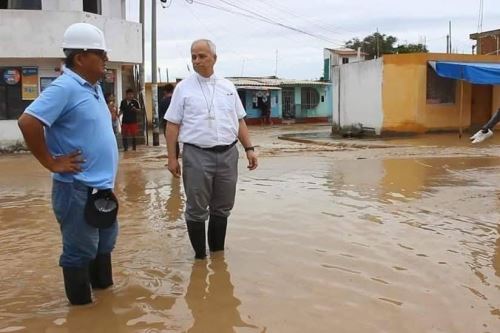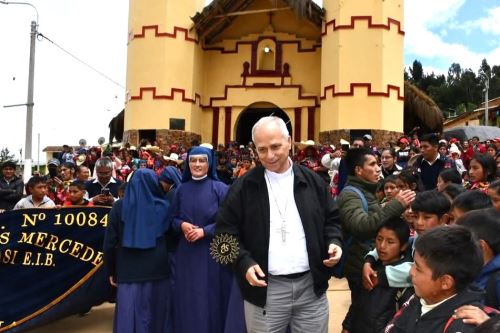16:30 | New York (U.S.), Jul. 1.
About two months after the election of Robert Prevost as
Pope Leo XIV, the prestigious Time magazine dedicates its cover and an extensive feature —accompanied by historical photos— that highlights key aspects of the Catholic Church's head, from his upbringing in a Catholic American family to his valuable work in Peru, as well as other aspects of his life.
Time begins its article by stating that the election of an American pope in the near future was once considered almost impossible.
"The Americans were too dominant elsewhere, too loud, too confident, too greedy, too obsessed with individual liberties. They venerated the new and the shiny, preferring novel and homegrown faiths to the traditions of Europe or Asia," the publication emphasizes.
However, it adds that if there were ever to be a pope from that country, he would have to come from the Midwest, the place where Robert Prevost was born and spent his early years.
The
extensive article titled 'The Making of the Pope' begins by focusing on John Prevost, the Supreme Pontiff's brother, and how his life has radically changed since May, as everyone now seeks him out to reach the Supreme Pontiff.
It then continues with Robert Prevost's early years in a suburb located south of Chicago, his formation at St. Augustine, a Catholic school in Michigan, and how even then he showed his vocation for the pastoral work he would end up embracing while studying at the Catholic Theological Union (CTU), where he trained as a diocesan priest.
First contacts with Peru
In the late 1970s, he met Daniel Turley, who later became bishop of Chulucanas.
Turley remembers him as a person particularly committed to the idea of missionary work. In general, the Augustinians consider themselves a missionary order devoted to teaching and preaching.

"He was very interested in what I was doing in Peru," says Turley, who worked there for 52 years.
While other students were heading to their rooms to study, Prevost wanted to talk about what people in Turley's diocese needed.
"Of all of them, he was the most community minded," he added.
Arrival in Chulucanas
In 1983, he arrived in Peru to become the personal secretary to the bishop in Chulucanas, in Piura region, northern Peru.
His arrival coincided with one of the most damaging El Niño events to hit the area, and he immediately set to work helping to rebuild the region.

While Pope Leo owes his formal education almost solely to the northern hemisphere, much of his shaping as a practitioner occurred in Peru.
"Those are the life experiences that give you life to continue on, that nourish you," says Turley, who was Prevost's superior when he arrived.
"As a young priest, to go through that, and see how beautiful it is, how poor people can be, and yet all of the goodness and the power of people when they come together, and the wonderful things that they can do if you start breaking down prejudices and division." Prevost said as much at St. Jude's: "The part of ministry that most shaped my life is Peru."
After several years as head of the Catholic Church in Chicago and serving at the Vatican, Robert Prevost returned to Peru in late 2014 to take over the Diocese of Chiclayo, appointed by Pope Francis.
He quickly won the affection of the people, who "wanted someone who was open and welcoming."
The challenges weren't only from within the church.
"Right after he became a bishop, we had the tremendous problem of Venezuela," says Turley, who oversaw the Catholic Church's response to the 1.5 million asylum seekers accepted into Peru after the Venezuelan economy and civil society began to collapse in 2014. They needed housing, jobs, and medical help.
"One of the best bishops to work with in dealing with migrants was none other than Bishop Robert Prevost," Turley notes. "His diocese was so well organized to take care of them."
Then, in 2023, Prevost was named a cardinal and returned to Vatican City, where he took on increasingly important roles until the announcement of his election in May.
"He's been formed in the kind of church that is forward-thinking, missionary in its outlook, globally aware, and then, especially in Peru, very deeply formed by his accompaniment of people who were the poorest," says Sister Barbara Reid, the current president of CTU.
"You can hear it in everything he says," she underlines.

(END) MAO/JMP/MVB
Published: 7/1/2025